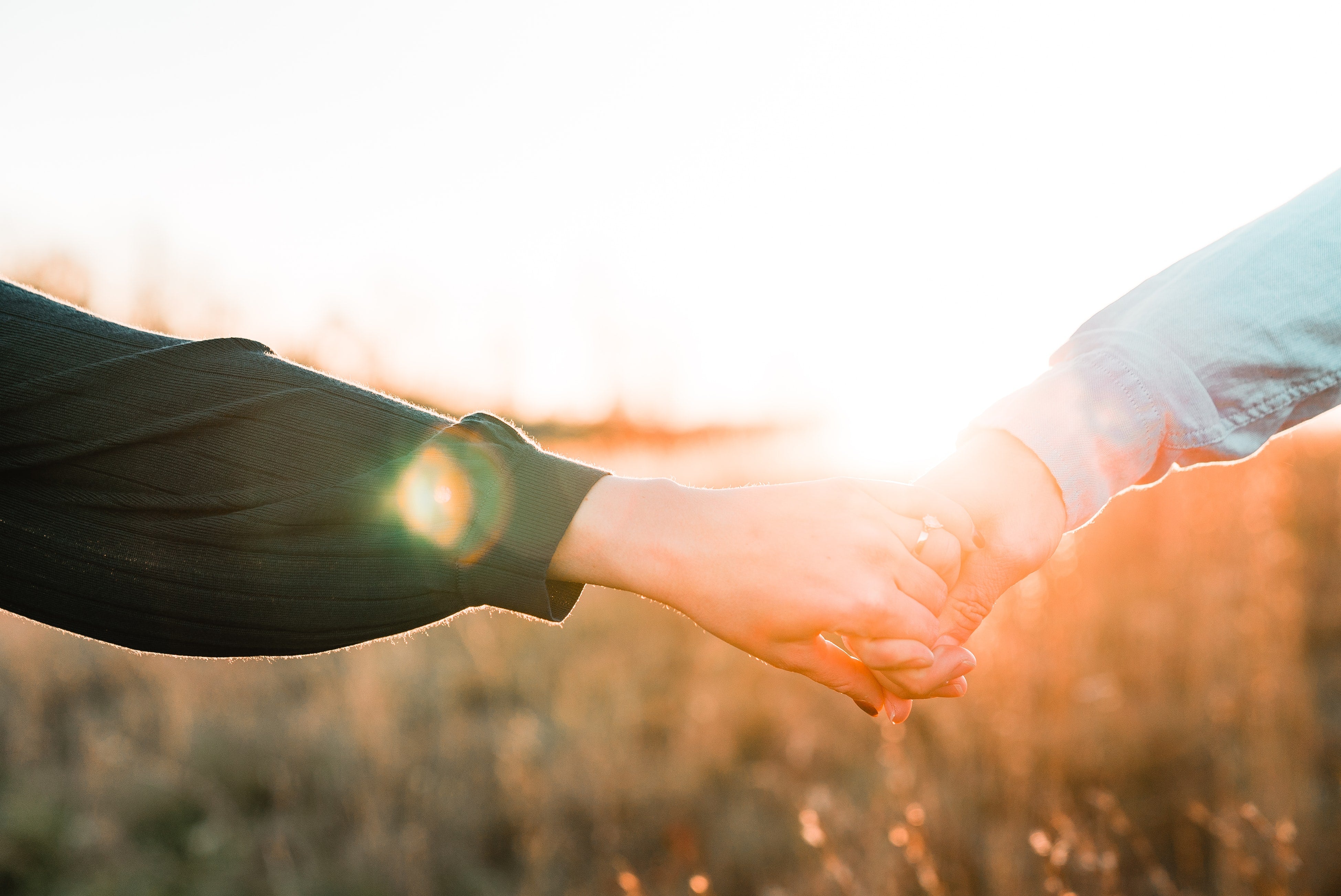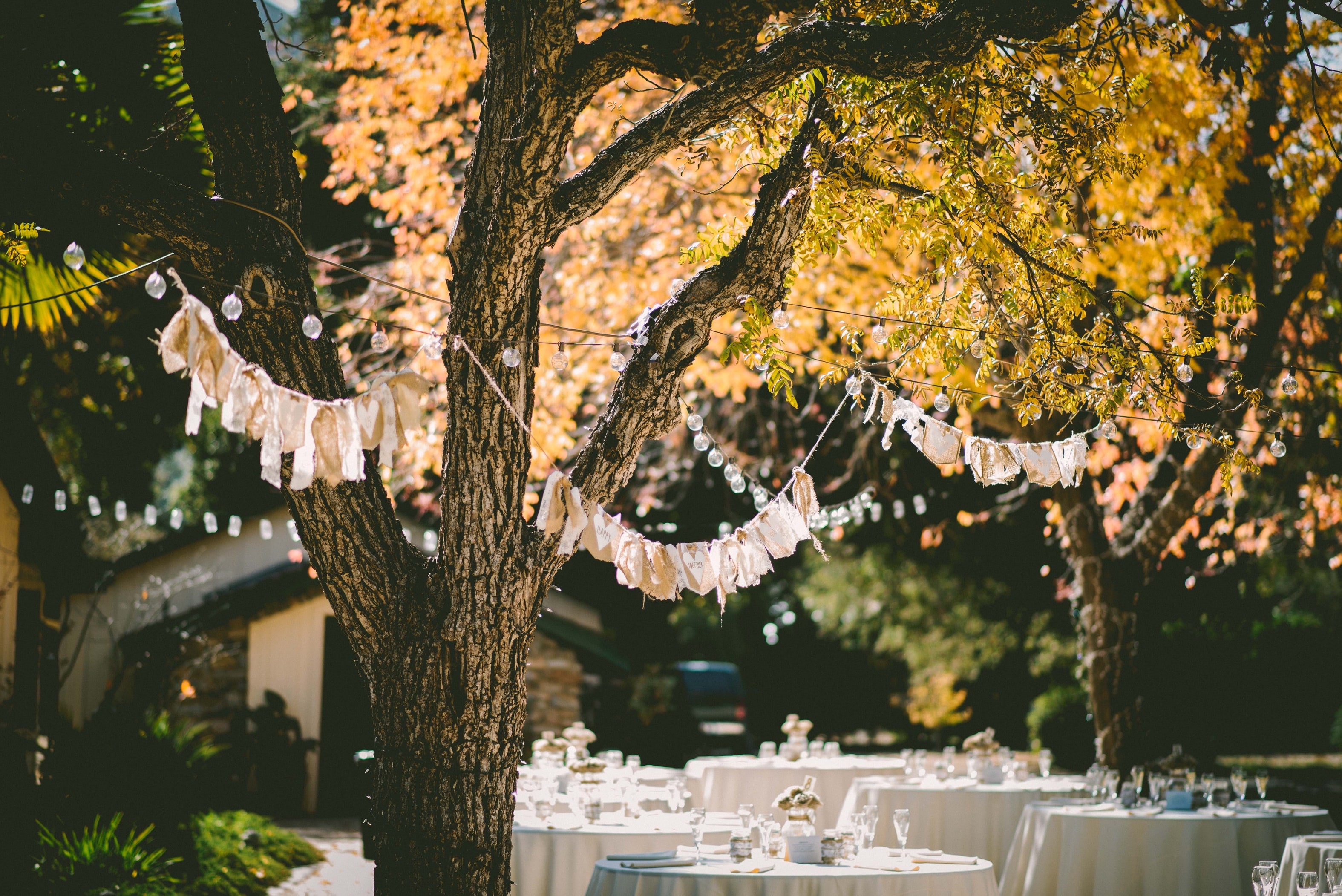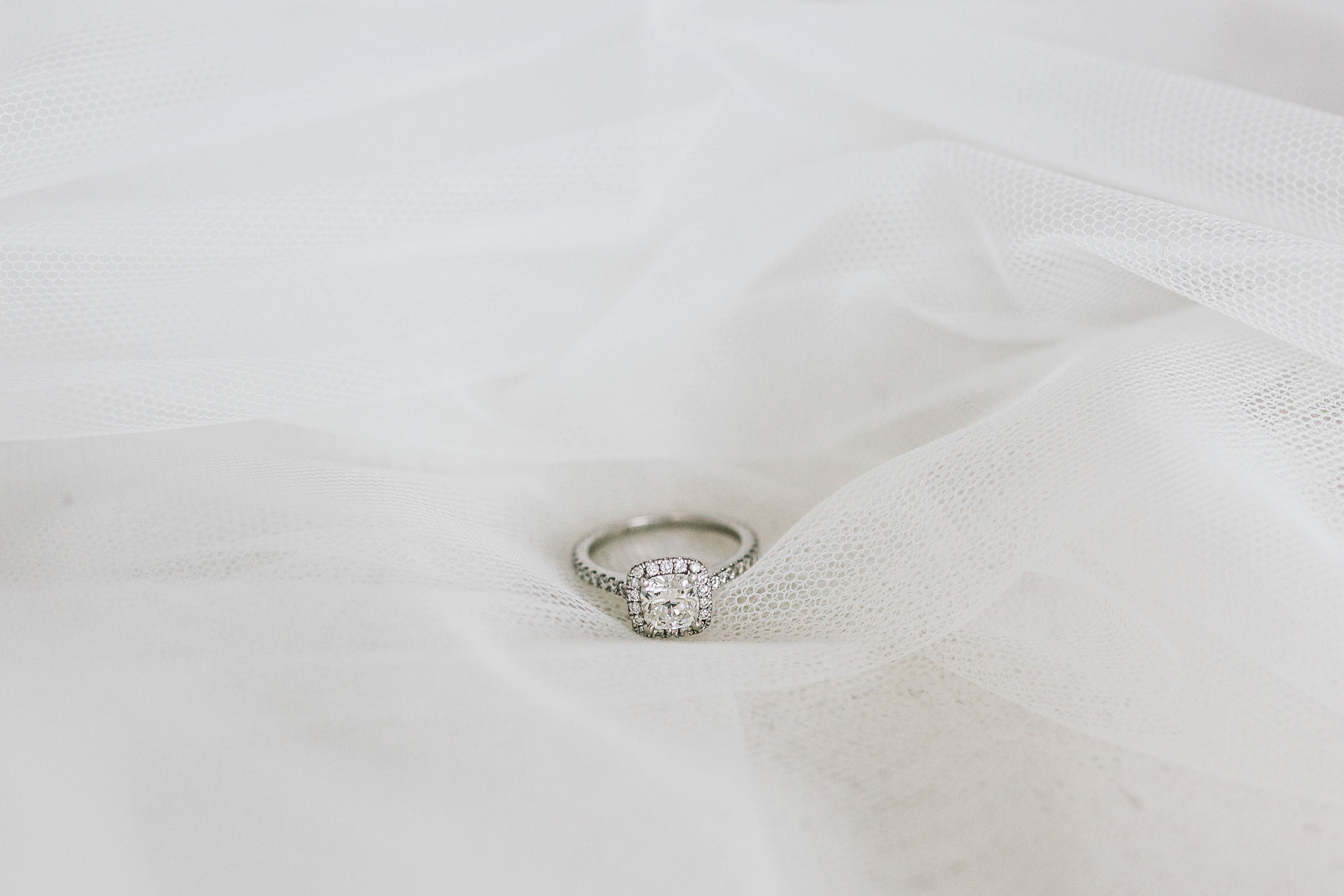
Handfasting Ceremonies: A Wedding Tradition
You might've seen a handfasting wedding ceremony before, possibly even on TV shows like Game of Thrones or movies like Braveheart. But have you ever wondered what the meaning is behind them or why couples choose them for their wedding day? Look no further; this blog has you covered.
So what exactly is a handfasting ceremony?
This type of wedding ceremony is actually where the phrase 'tie the knot' was coined; it's the act of a husband and wife standing either side by side or face to face with a ribbon of sorts binding their hands to each other. It's a ritual that symbolizes unity, being tied together as one. Then, while the couple has their hands bound to each other, they recite words that express their love and commitment.

Where do handfasting ceremonies come from?
Handfasting ceremonies dated back more than 2000 years and have initially been a Pagan ritual that signified an engagement. They have since been seen in wedding ceremonies of all kinds, both religious and non-religious. Handfasting ceremonies came to be in Ireland and are still quite common in both Ireland and Scotland today while also being carried out worldwide in many different ways.
Initially, during ancient Celtic times, handfasting ceremonies were used to mark the beginning of a year-long engagement. The couples would have their hands bound together to each other with ribbon while a druid priest would proclaim them engaged to each other. It was essentially a public way of declaring they wished to marry and were not interested in any other potential relationships with other people. After a year of living together as an engaged couple after the ceremony, they'd then be officially married (assuming they still wanted to be together!). With Celtic culture spreading around the world, so did the handfasting ceremony. So they started to be carried out in places like Scotland and Britain and eventually worldwide. While they are recognized as a legally binding marriage in some parts of Ireland and Scotland, elsewhere, it's considered a ritualistic part of a ceremony and still requires a couple to do the necessary legal elements also.

What color ribbon should I use for a handfasting ceremony?
The answer to this will be up to you and what you want this ritualistic practice to convey and represent. Each color has its meaning.
We've added a list below of each color and its representation when used within the ribbon at a handfasting ceremony;
Red - Strength, Passion & Fertility
Yellow - Confidence & Joy
Orange - Attraction & Kindness
Green - Prosperity & Health
Purple - Power
White - Purity & Peace
Black - Strength & Success
Blue - Tranquility, Sincerity & Devotion
Pink - Romance
Brown - A grounded nature
Gold - Energy, Wealth, Intelligence, and Longevity
Silver - Creativity & Inspiration
After you've looked at this list, you might be wondering which color to use. Some brides will use one specific color to fit a theme of their wedding or focus on what the color represents, while other brides will mix and match colors to create the perfect combo that represents all aspects of both themselves and their partner. For example, if you want to convey and symbolize attraction, kindness, purity, peace, strength, and success - you would mix Orange, White, and Black to create a tri-color ribbon for your handfasting ceremony. Ultimately, whichever colors and their representations fit you and your partner will be the ones you'll want to mix in for your ribbon. Keep in mind that it doesn't have to be a 'ribbon' specifically; you can use anything similar to a thread or type of fabric. Some brides even use flax or other plant leaf-style ribbons on their special day. Some couples will also add a small momento, tied at the ends of their ribbons such as keepsakes or jewelry to give it that extra bit of sentimentality, while other brides may use an aspect of it as their 'something old' or 'something blue.

Who ties the ribbon in a handfasting ceremony?
Choosing who ties the ribbon is really up to each couple. While most couples usually use the wedding officiant, they've chosen, others might choose to have someone special to them tie the knot for their wedding days, such as a child, parent, or close friend during the wedding ceremony.
One thing to remember on your wedding day is to keep the ribbon safe afterward - it makes a friendly reminder of your special day. You could have it saved in a special box or framed and placed on your wall. There are a lot of options for safekeeping after your wedding day!
How exactly does a handfasting ceremony work?
Firstly, ensure you talk it over with your celebrant or officiant before the wedding day. They may need to do some research in advance. Secondly, some couples will ask their celebrant to explain to the guests what's happening. Finally, the officiant will demonstrate its meaning on the day, so consider it an option.
As for the handfasting itself, the wording will always vary depending on what you and your partner are after. There are many different ways the vows and words your celebrant will say, but we'll give you a generalized idea:
To kick things off, your officiant will ask if you're both consenting and voluntarily there for your ceremony, to which you'll say yes.
The celebrant will then ask you both to hold hands (you'll be facing each other or side by side. If you're facing each other, you'll reach out and take each other's hands. If you're side by side, you'll both hold hands with your arm extended out in front of you around the mid-point of your bodies)
Next, the celebrant will ask if you'll both do certain things such as respect, love, honor, or be faithful, etc., to one another, to which you'll agree. This is when the first cord is placed over both of your hands.
After this, you'll generally be asked a question of surviving some of the life hardships such as "will you be there for each other through times of heartbreak, upset, pain or sorrow," etc., to which you'll once again agree.
The officiant will then place the second chord over your hands.
Then a question will be asked that will have some relation to consistency in a relationship, such as "will you be there and present for one another to help your union grow stronger," to which you'll agree. Finally, the officiant will drape the third cord.
For the fourth cord, the officiant will ask a question relating to the upsides of life. Something such as "will you be there for each other through all the good, the happy and fun times?" and you'll agree as the cord is placed over your hands again.
The next question will deal with positive intentions for communicating with each other: "will you always be the happiness and peace the other needs and be open to hearing the other's words and understanding them?" To which you'll both agree, and the fifth chord will be placed.
For the sixth and final cord, you'll be asked a question about the ability to get back up together if one of you should fall to ensure your commitment to each other, to which you'll agree before having the sixth cord placed.
The wording will be different for all of the questions above depending on what will be meaningful to you and your partner and worded for your specific ceremony based on conversations you'll have with your celebrant. Still, hopefully, the generalized run-through will give you a sample of what's involved. You can have far more words and context involved or keep it short and straightforward. The choice is yours.
Have you considered a handfasting ceremony for your wedding day? If so, which colors do you think to represent you and your partner? We'd love to know in the comments below!



Leave a comment
This site is protected by hCaptcha and the hCaptcha Privacy Policy and Terms of Service apply.